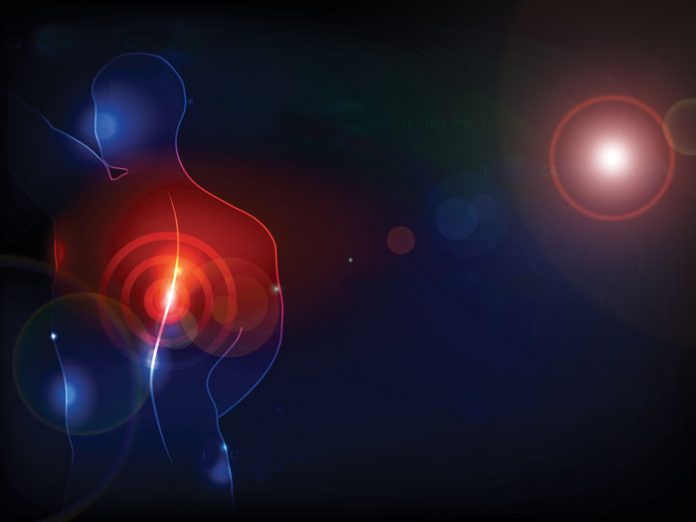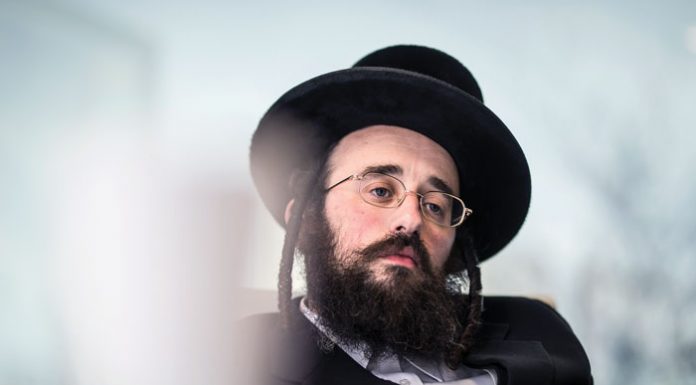Thirteen-year-old Miri Feldbaum* was at the doctor’s office for her annual visit, doing as she was directed: Hold your breath. Open your mouth wide. Stand on the scale. Bend over. At the last one, the doctor paused.
“Hmm,” she said, “you seem to be developing scoliosis. Let me send you to a specialist in NYU.”
Scoliosis is an abnormal sideways curvature of the spine that occurs most often during the growth spurt right before puberty. The curvature can be in the shape of a “C” or it can even be double, twisting the spine into an “S.” Most cases are mild, but the problem can be more than cosmetic because if left untreated it can affect the lungs, liver and heart, and lead to other complications.
The specialist sent her for an X-ray, which confirmed that Miri was in the early stages of scoliosis. Her spine had a 22° tilt, which wasn’t serious but would only get worse without intervention. The specialist recommended a back brace.
“It won’t fix your back,” he explained, “but at least it will prevent the curvature from getting worse than 25°. If it progresses beyond 40°, there’s no other option except surgery.”
The thought of being stuck inside a plastic contraption for ten hours a day was daunting, but not as daunting as the thought of having an operation performed on her spine, not to mention the metal fixings that would be inserted permanently. Miri agreed.
Life in a brace wasn’t easy. Miri had always enjoyed sports, but she could no longer lunge for that ball. Her body was basically locked into a frame; she couldn’t even bend down normally. “My tznius certainly picked up a notch!” she tells me with a chuckle. “I learned how to kneel like Rus and I had to wear several layers, one under the brace to avoid skin irritation, and one over my top to hide the ugly outline of the device, even in the summertime.”
Still, it was better than invasive surgery.
Which was why Miri was so disappointed when she returned for a follow-up X-ray six months later and learned that her efforts had been in vain. Despite being utterly fastidious about wearing the uncomfortable device, not only hadn’t the curvature been maintained, it had now progressed to 26°. It was a terrible let-down.
Nevertheless, the doctor advised her to persevere. Miri wore the brace for another year, even though it was barely monitored or tweaked to accommodate her growing body. When she went back for an evaluation at the end of that period she was shocked by the doctor’s verdict. “We tried, but it didn’t work,” he told her. “The curvature is now at 40°. You’re going to have to undergo surgery.”
The brace had proven useless.
With no other option, and a back that now rivaled the Leaning Tower of Pisa, Miri’s parents scheduled the operation. Alas, the only available date was the first day of summer camp, which meant that Miri would not be able to go that year, as the recovery period can be lengthy. Nor could the surgery be postponed, as the procedure is generally done in the summer, because bones are very sensitive to cold and it’s easier for a person to recuperate in the warm weather.
In the meantime, Miri’s application to camp was waiting to be sent off. She decided to go ahead and apply anyway, in the hope that something might change and she would be able to go. Application in hand, she went to her pediatrician, Dr. Olitsa Roth, for her annual visit. As part of the exam, the doctor asked Miri to bend down so she could check her spine. Taking one look at its curvature she gasped. “Didn’t I send you to a specialist for your back?” she asked.
“Yes,” said Miri, “I’m actually having surgery next week!”
“Surgery?” the doctor exclaimed. “Oh no, you mustn’t! Go home. I’m going to call your mother.”
Dr. Roth called Mrs. Feldbaum and explained to her how risky back surgery really is. After opening the patient’s back, the surgeon inserts metal rods to hold the spine in place. The affected vertebrae are then fused together—the exact number depends on how far the scoliosis has progressed—so that they heal into a single, solid bone. The end result is that the patient ends up with permanently limited motion. In addition, some type of bone material or graft must be placed into the spaces around the vertebrae to be fused. While in the past a piece of bone was taken from the patient’s own hip, other materials have since been developed. The operation can last anywhere between four and eight hours.
Although today’s surgeons are highly-skilled, they work mere millimeters from the spinal cord, and one wrong move, chalilah, could end in paralysis. And even after the operation, the road to recovery is long. Some patients take weeks or even months to get back to themselves, and as the condition usually affects teens, that means a lot of missed school.
Fortunately, Dr. Roth had an alternative. With prior permission, she put Mrs. Feldbaum in touch with another patient of hers whose two daughters had suffered from scoliosis and been completely healed without invasive surgery. What was their secret? A man named Tovia Hauer, a humble chasid from Monroe who manufactures his own back braces.





















